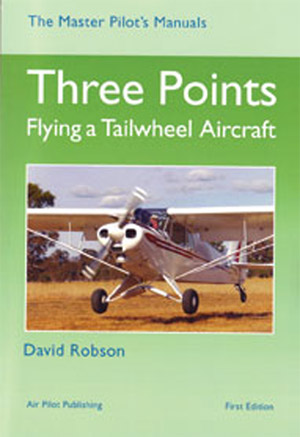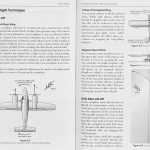Three Points
Flying a Tailwheel Aircraft
Master Pilot’s Manual

The original configuration of an aeroplane’s undercarriage was tailwheel. Only during World War II did the nosewheel become common due to the longer runways required to take off with the heavy loads. After the war, the tricycle undercarriage layout became standard. but the traditional arrangement has always been known as the ‘conventional’ undercarriage.
The tailwheel configuration is lighter, simpler and offers less drag. It is also better for rough field operations. Many agricultural aircraft, aerobatic aeroplanes and ultralights, therefore, have this configuration. However, the conventional undercarriage does introduce some extra demands on the pilot, especially during take-off and landing, and in strong winds.
A tailwheel aeroplane is more difficult to operate on the ground because the centre of gravity is behind the mainwheels; therefore, it tends to deviate from a straight path during taxi, take-off and landing. Since tailwheel aeroplanes demand more piloting skill, flying one well is a signal of a good pilot.
If you want to fly a warbird antique or a modern aeroplane with a conventional undercarriage, this book tells you how in a simple, clearly illustrated way. It begins with the theory and dynamics of thetailwheel aeroplane and then describes the piloting techniques needed to safely fly this configuration. There is also a fascinating collection of stories about what it is like to fly some of the common and not-so-common tailwheel aeroplanes – stories by old hands that otherwise could only be found in a good session of hangar flying.







